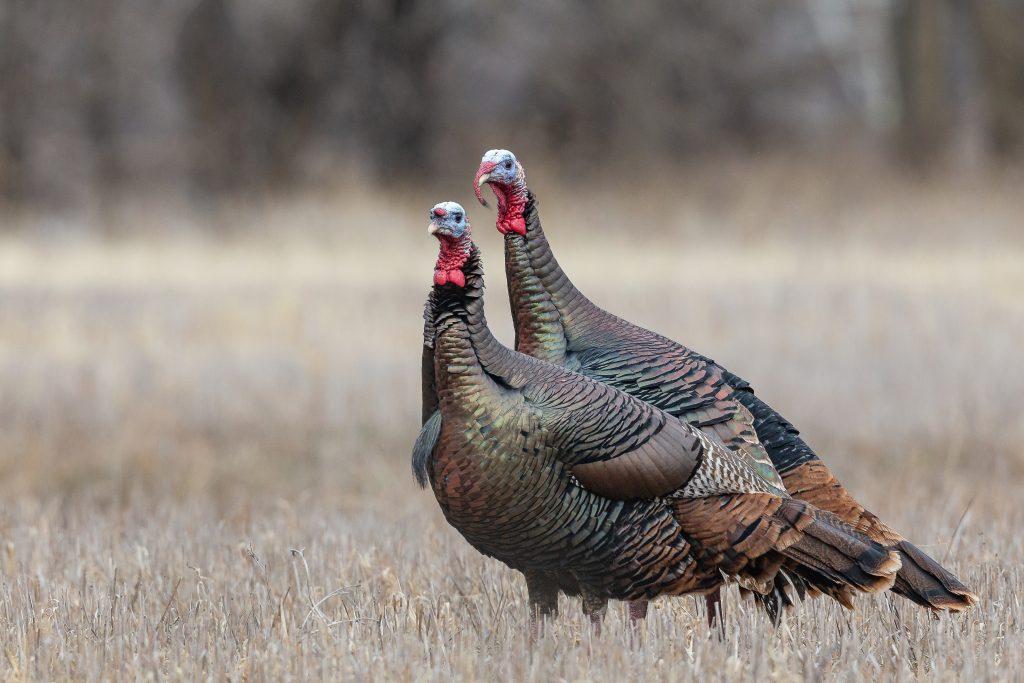Forever Chemicals and Wild Game
What you need to know about PFAS in wild turkey meat – don’t panic, just be smart.
Every spring hunters’ mouths start to water at the sound of a gobble in the distance because we know the noise is associated with two large organic, free-range turkey breasts and more. But there are precautions to take associated with a toxic chemical accumulating in game meats in certain parts of the country.
Fortunately, with a little research, perspective and a newfound understanding of these forever chemicals, known as “PFAS,” harvested wild turkey meat anywhere outside of a few isolated “Do Not Eat” advisory areas is still a safe, healthy and delicious option.
A Brief Backstory
Breaking news hit the hunting community in 2021 when the Maine Department of Inland Fisheries & Wildlife issued a 125-square-mile “Do Not Eat” advisory for deer after the Maine Center for Disease Control and Prevention detected high levels of PFAS, short for per- and polyfluoroalkyl substances, in five of the eight deer tested.
The following year, the MDIFW expanded testing efforts and identified an isolated area of PFAS contamination. In 2023, the agency reduced the original “Do Not Eat” advisory boundary from 125 square miles to 25 square miles and added wild turkey to the advisory. In 2024, two additional areas were added to the advisory.

As a result of the news, other state wildlife agencies started testing for PFAS loads in game meat. As of December 2024, Maine, Michigan, New Hampshire and Wisconsin are the only states with “Do Not Eat” advisories on deer. Maine is the only state that includes wild turkeys in its advisories. Combined, these areas (most of which only advise against eating venison) are only about 50 square miles of America’s 3.8 million square miles.
Although the discoveries were alarming to most hunters who heard about them, the presence of PFAS in food and the environment isn’t new.
A PFAS Minicourse
PFAS are a family of over 12,000 manufactured chemicals that don’t deteriorate. These “forever chemicals” were first developed in the 1940s and are found in many different consumer, commercial and industrial products. The Environmental Protection Agency has noted these chemicals exist in our water, soil, air and food, as well as in materials found in our homes or workplaces.
PFAS use became widespread because they repel water and oil, making them ideal in paints, firefighting foam, personal care products, household cleaning items, nonstick pots and pans, food packaging and wrappers, stain-repelling fabrics and clothes, etc. Many Americans have come to love the convenience of all these products, but they come at a cost.
The man-made chemicals are known to build up over time in humans, animals and the environment, and have been linked to negative health effects, including decreased fertility, developmental delays in children, hormone disruption and an increased risk of certain cancers.
PFAS in Animals; PFAS Testing and Advisories
PFAS are likely accumulating in animals through water and soil contamination, which happens when products containing PFAS are spilled or disposed of on the land. Think landfills, disposal sites, hazardous waste sites and wastewater treatment plants, and agricultural fields using sewage sledge for fertilizer. Facilities that create PFAS and areas around manufacturing facilities with products containing PFAS can also be a source of concern.
Because PFAS are nearly indestructible, they’re transferring from water and soil to plants, fish and animals, and then to humans who ingest them.
The FDA has been testing fresh and processed foods consistently for PFAS since 2019. Most food items tested were free from PFAS. Of the 1,300 foods tested, seafood had the highest levels of PFAS. The FDA does not currently consider PFAS levels in general U.S. foods to be an immediate health concern, but localized contamination, such as in Maine, continues to prompt targeted advisories.
Make Smart Decisions
Mark Hatfield, certified wildlife biologist and the NWTF national director of science and planning, encourages people to follow their state wildlife agency’s guidance.
“Stay informed on any guidance from your state wildlife agency and adhere to all public guidance they provide on “Do Not Eat” orders and how you should interact with wildlife in potentially contaminated areas,” he said. “Understand that state wildlife agencies will be conservative and will provide direction to ensure human safety is prioritized.”
State agencies often conduct research on PFAS in wild turkeys, and wild turkeys continue to be a healthy, safe option. The NWTF is focused on enhancing wildlife habitats year-round, improving the health of our forests and lands, underscoring the importance of Healthy Habitats. Healthy Harvests.

NWTF’s Plan for PFAS
The NWTF has not specifically studied the effects of PFAS on wild turkeys but encourages agencies to apply for research funding through the NWTF’s National Request for Proposals Program. The fourth annual NWTF RFP program will open in April of 2025. The program is an aggressive, yearly effort to fund critical wild turkey research projects nationwide with support from dedicated partners. In the past three years, the NWTF and its partners invested nearly $1.6 million to universities, state and federal agencies and broader conservation partners needing financial assistance.
Hatfield said the NWTF will continue to provide research funding to the most important projects and consider proposals regarding PFAS effects in wild turkeys. The efforts would help us better understand the relationship between forever chemicals and wild turkeys to make more informed management decisions.
The NWTF will continue to monitor this issue and keep members informed when new information is discovered or becomes available. If you have additional questions, please contact conservation@nwtf.net.
